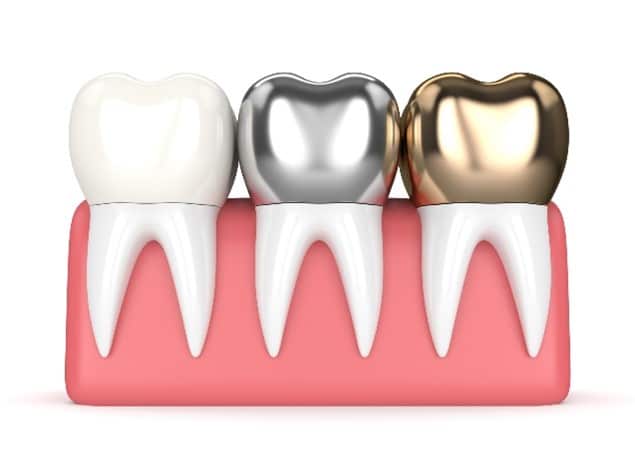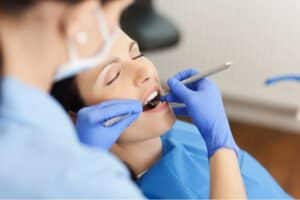A tooth is composed of three main parts, the root, the nerve and the crown. The root is the part of the tooth that anchors it to the bone. The nerve is a small tissue inside the tooth and is the one responsible to give it life in connection to the rest of the body. The crown is the outer area. It is the part of the tooth responsible for performing the masticatory functions within the mouth. As the outer surface, it is the most susceptible to damage such as fractures or bacteria. A prosthetic crown, also known as cap, is a fixed device used to restore the outer structure of an individual tooth. The prosthetic crown has been around for hundreds of years as a means to prolong the life of the tooth and to improve the esthetics of the smile.
Initially, crowns used to be a symbol of wealth. The earliest traces of the use of gold crowns as a symbol of nobility was in Luzon, in the Philippines, about 4000 years ago. Skeletons have been found containing gold crowns and teeth replacements. Around 700 BC, the Etruscans in the Italian peninsula were known to have worn gold crowns to symbolize their wealth. Archaeological findings have demonstrated this because gold crowns have been found among the remains of noblemen and women. In fact, it is believed noblewomen would have their front teeth removed in order to have goldsmiths decorate them or other cadaver teeth with golden bands. The use of gold as an adornment was also common in some Asian regions. In Europe, modern dental practices did not start to develop until the 1700s when dentures and crowns were carved from ivory or cadaver bone. However, these structures did not work well and by the 1800s porcelain was already in use for crowns. In fact, in 1889, the first successful crown restoration was performed by Dr. Charles Land. Using a “jacket crown” he was able to make a fractured tooth appear as new. However, the method of fabrication used created microfractures and these crowns were very brittle. In the search for greater strength and durability, during the 1900s fabrication methods were improved and new materials were implemented. For example, the porcelain fused to metal crowns became popular and sought to bring the best of both worlds with strength and esthetics.
In modern times, porcelain fused to metal crowns are no longer the standard in strength and aesthetics because the metal stains the gum and they have proven brittle in the adhesion between the metal and the porcelain. Dentists now prefer full e-max or zirconium crowns because they are a single structure and therefore devoid of weak points. They also maintain the translucency that characterizes natural enamel.
At the Costa Rica Dental Team, we have an onsite lab that fabricates high-quality prosthetics of all kinds. At our dental office, we only offer full e-max or zirconium crowns because these have demonstrated the least rate of problems over the course of the years. For this reason, we offer an incredible 10-year warranty for our crowns, so our patients can be sure to be receiving the best quality final work. We are a dental office located in Costa Rica that seeks to offer our patients the highest quality esthetic and restorative dental work at an affordable cost. Contact us now for more information!




